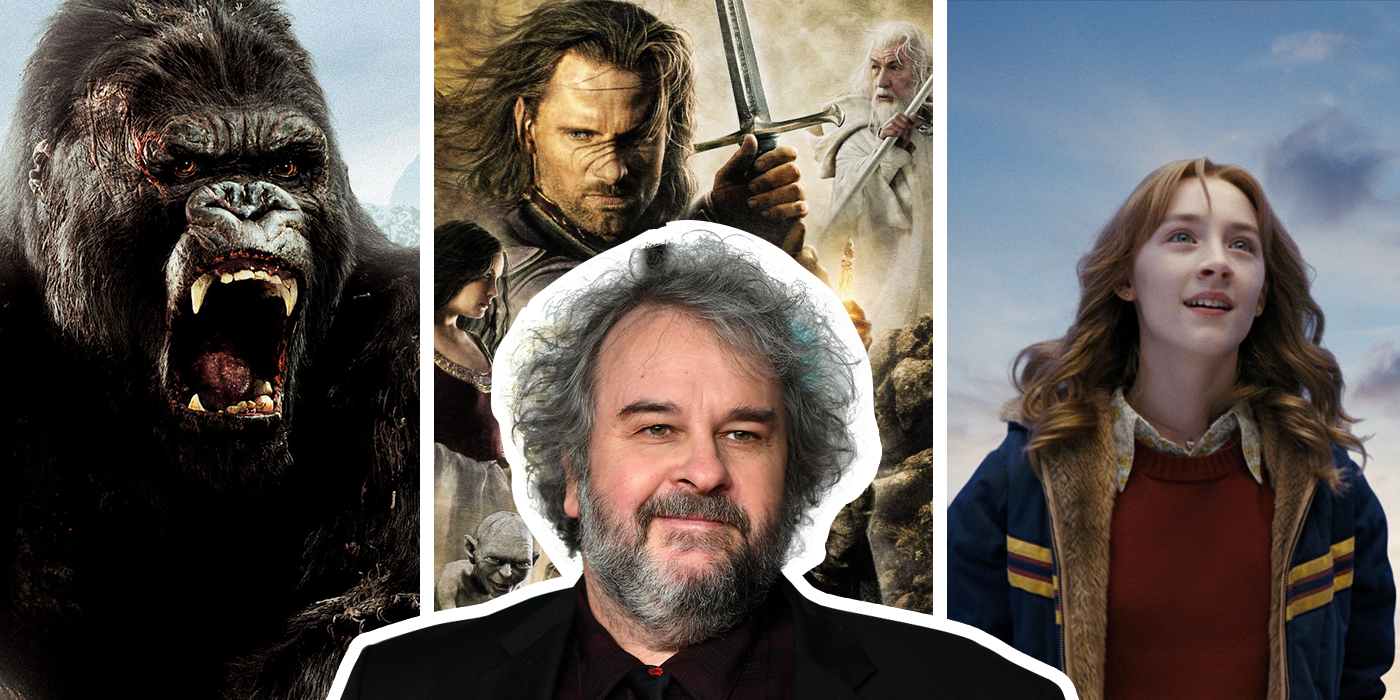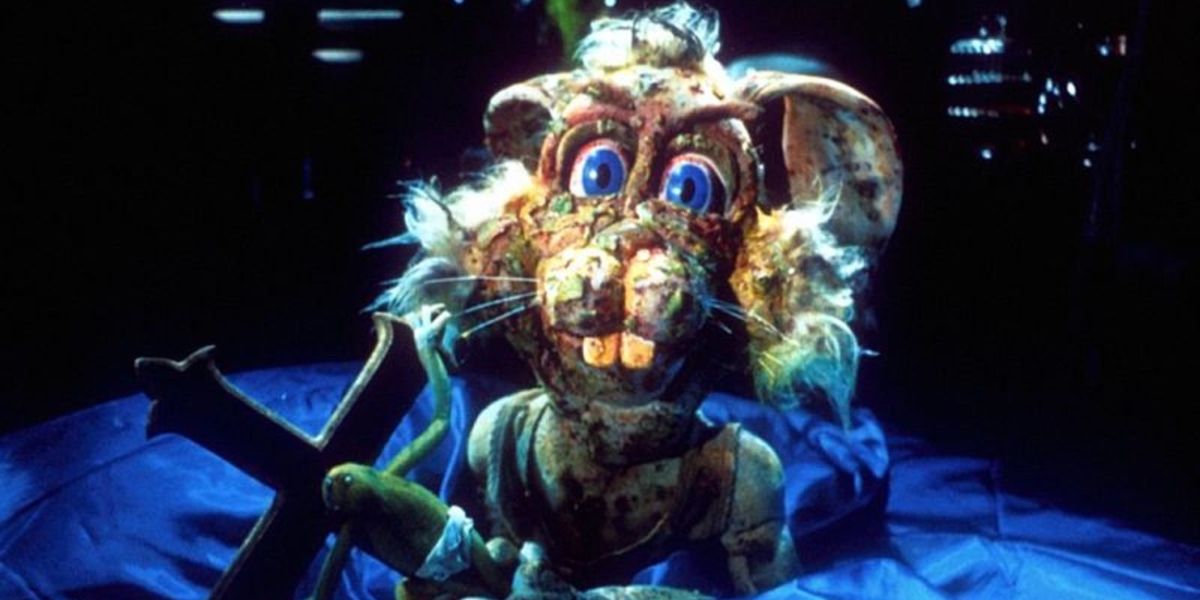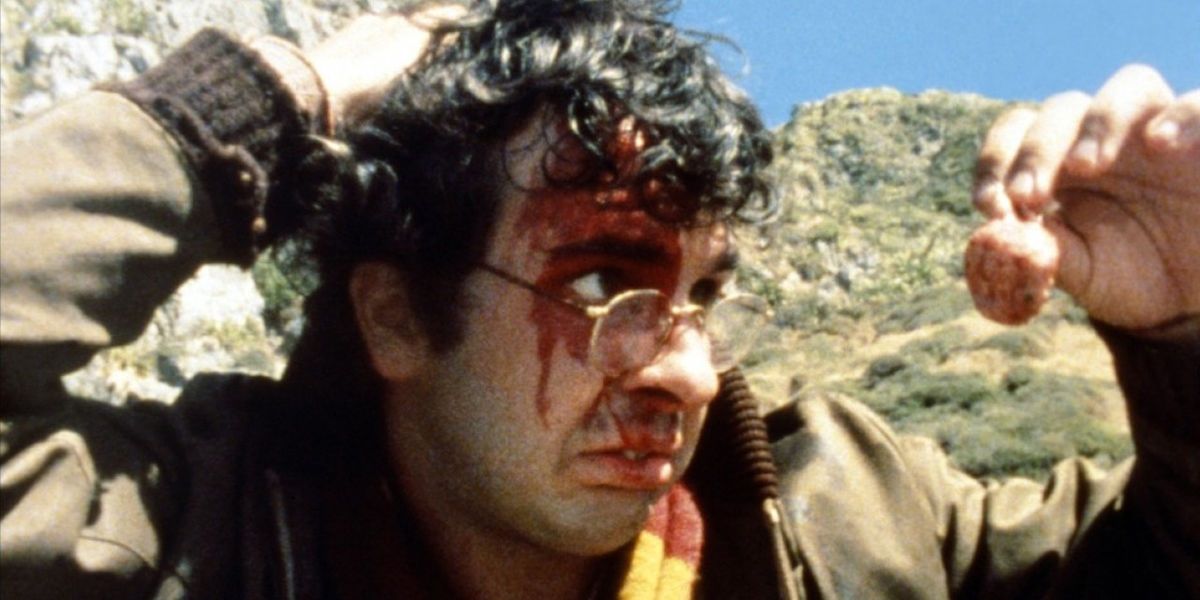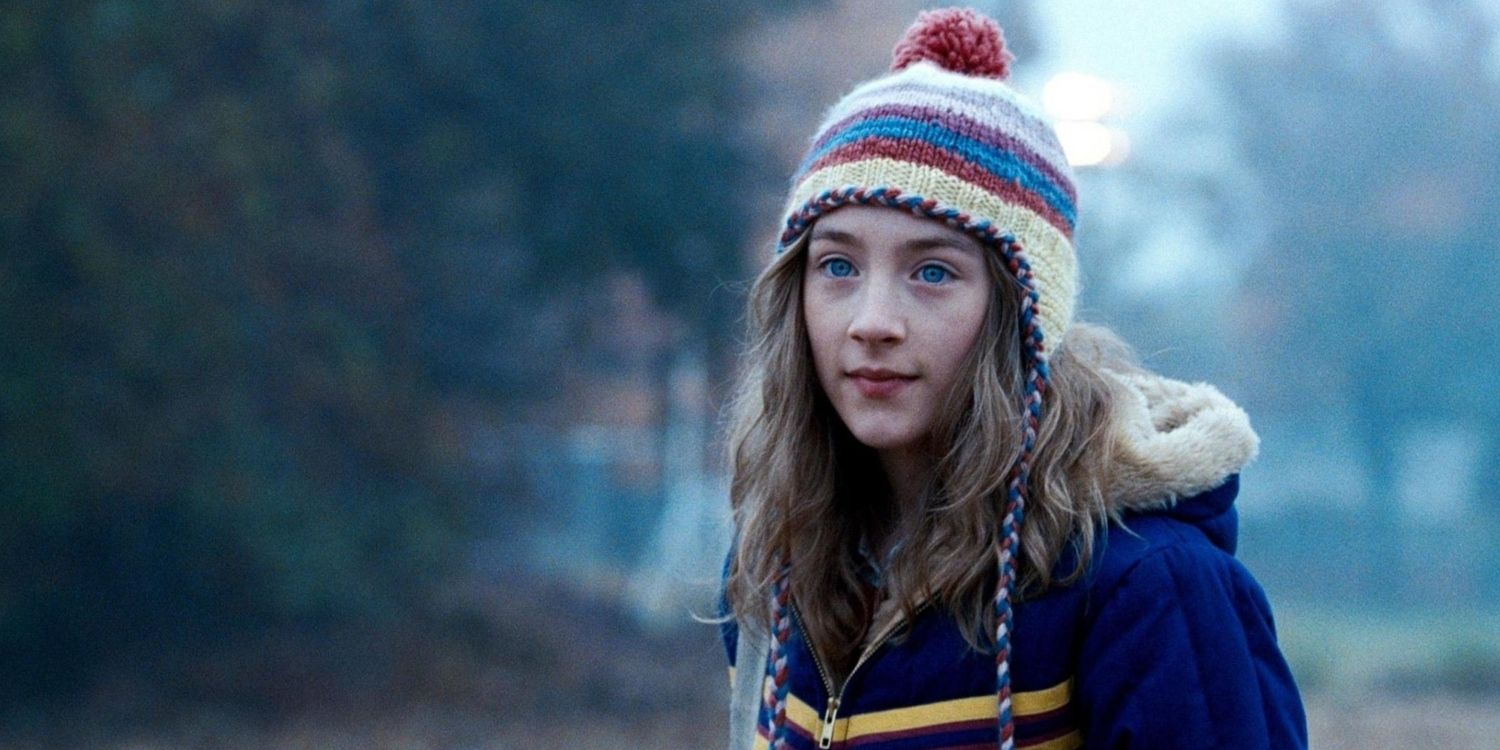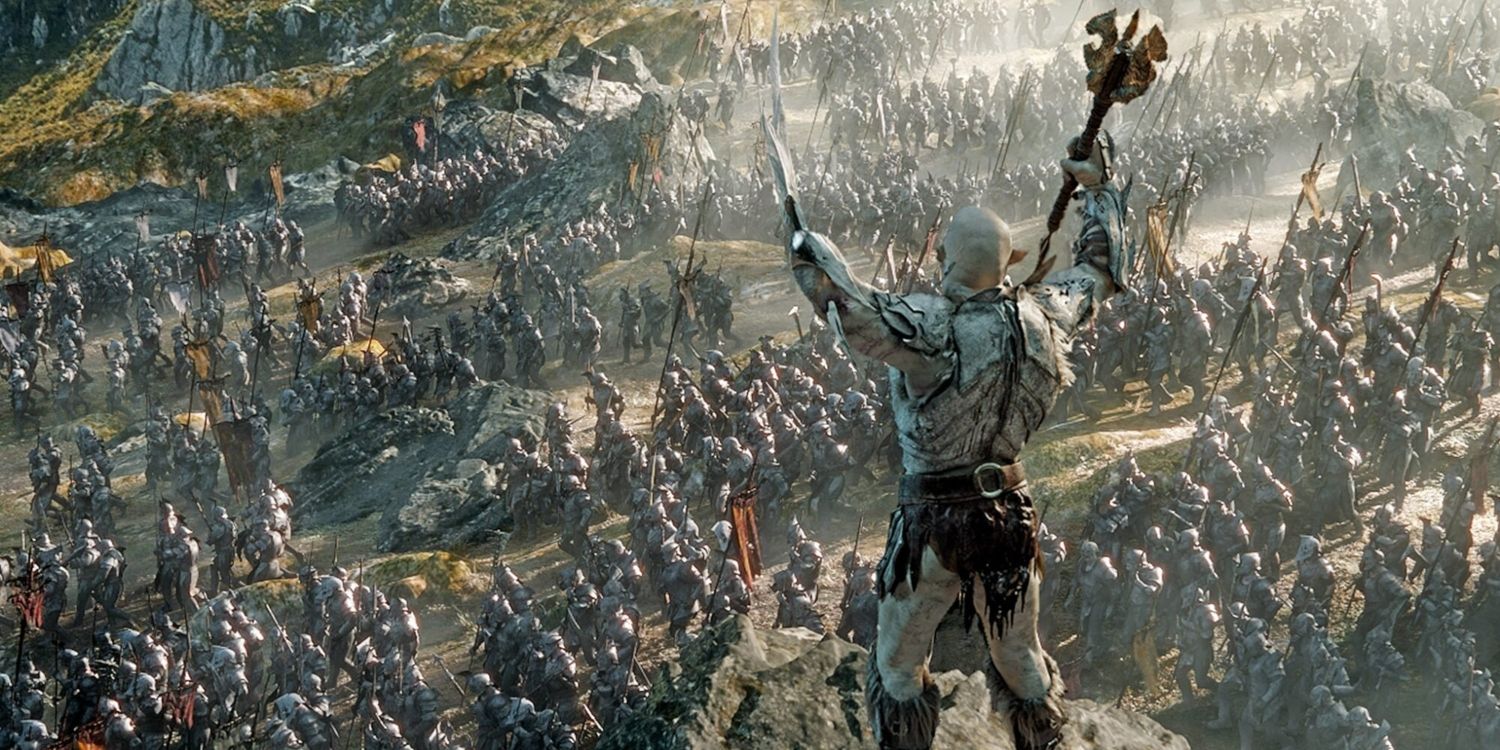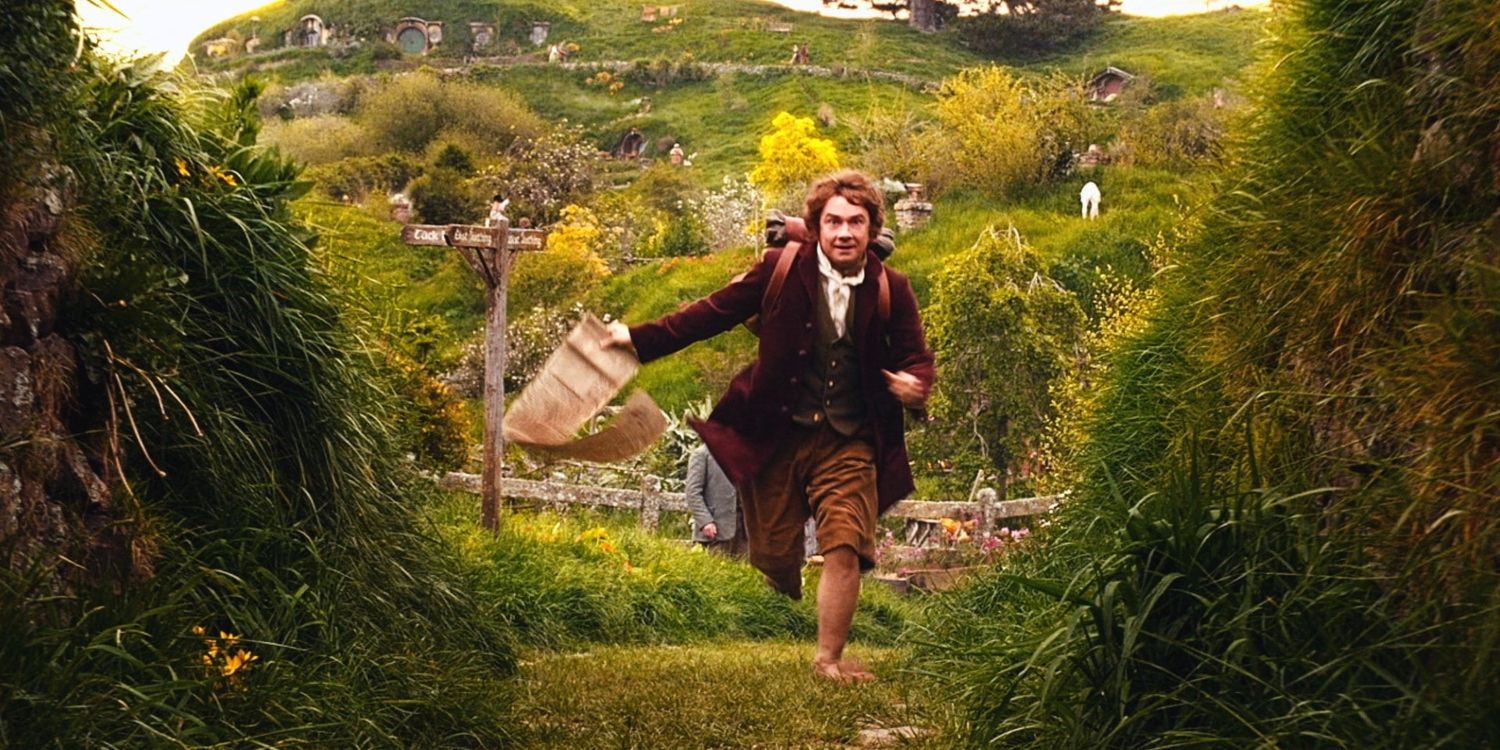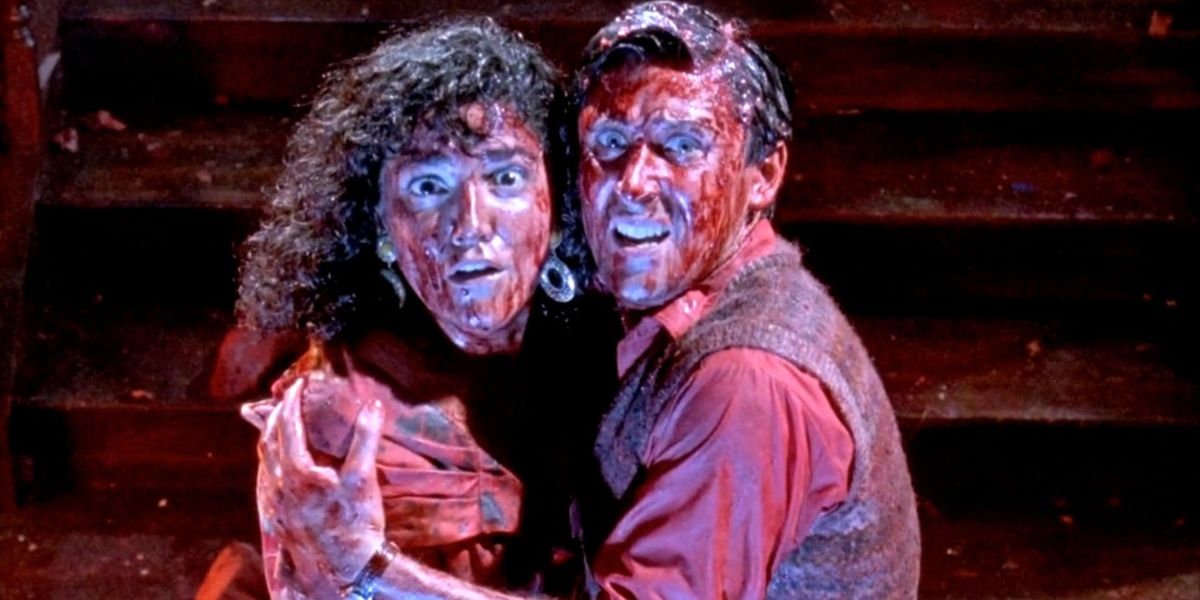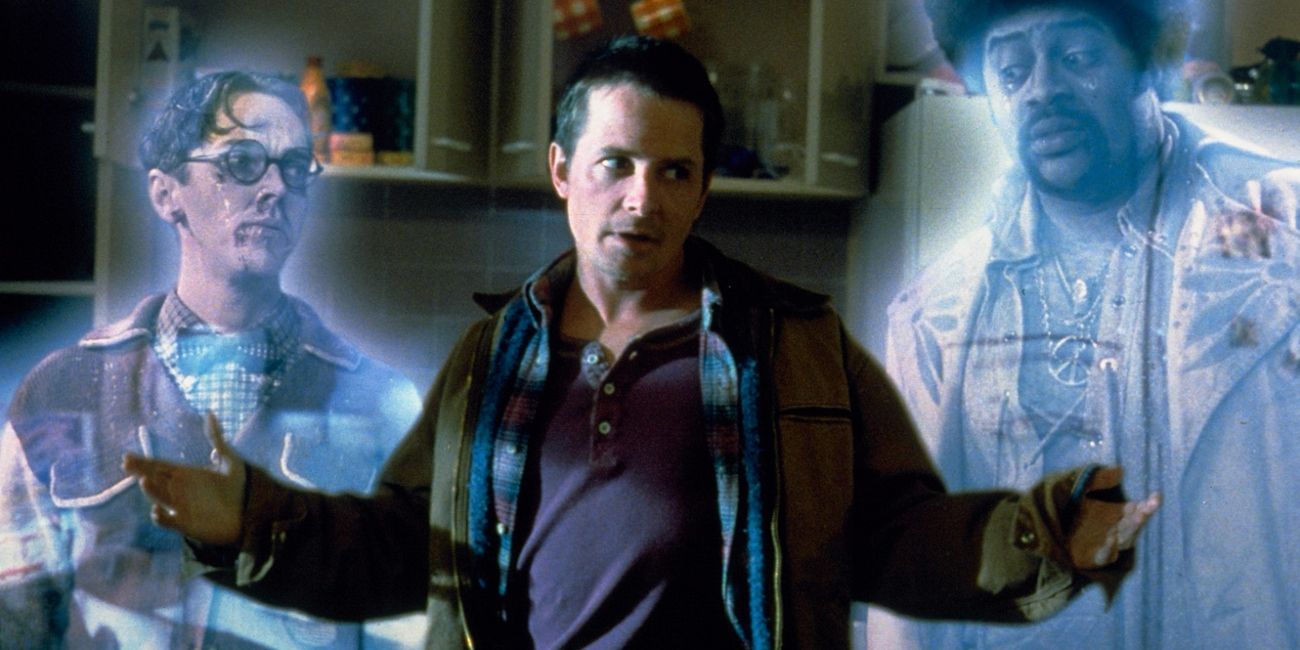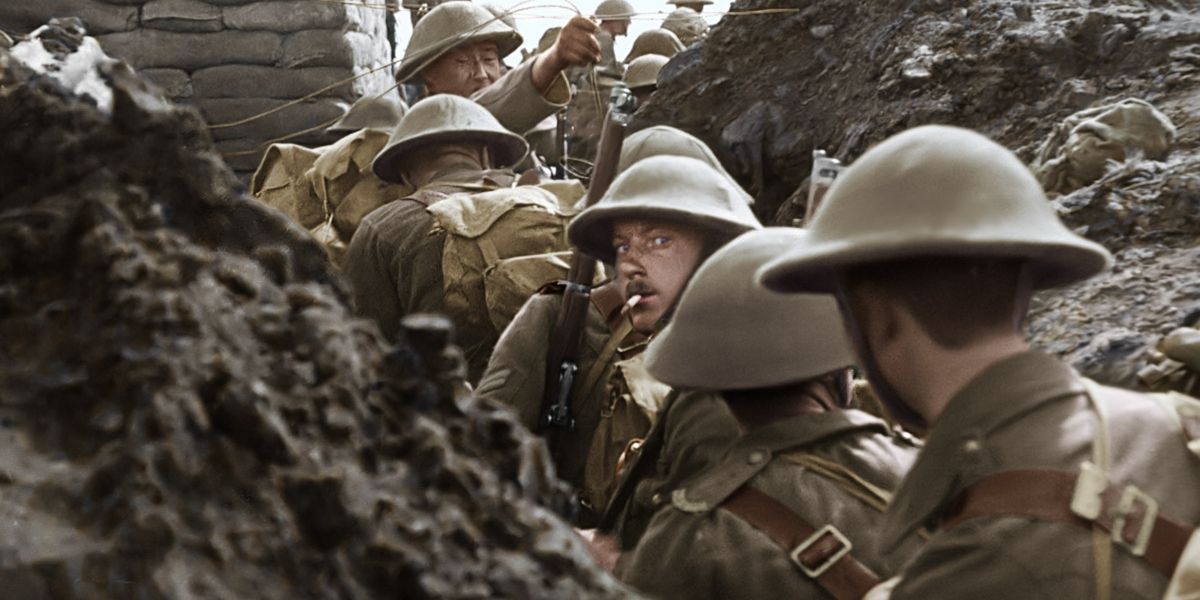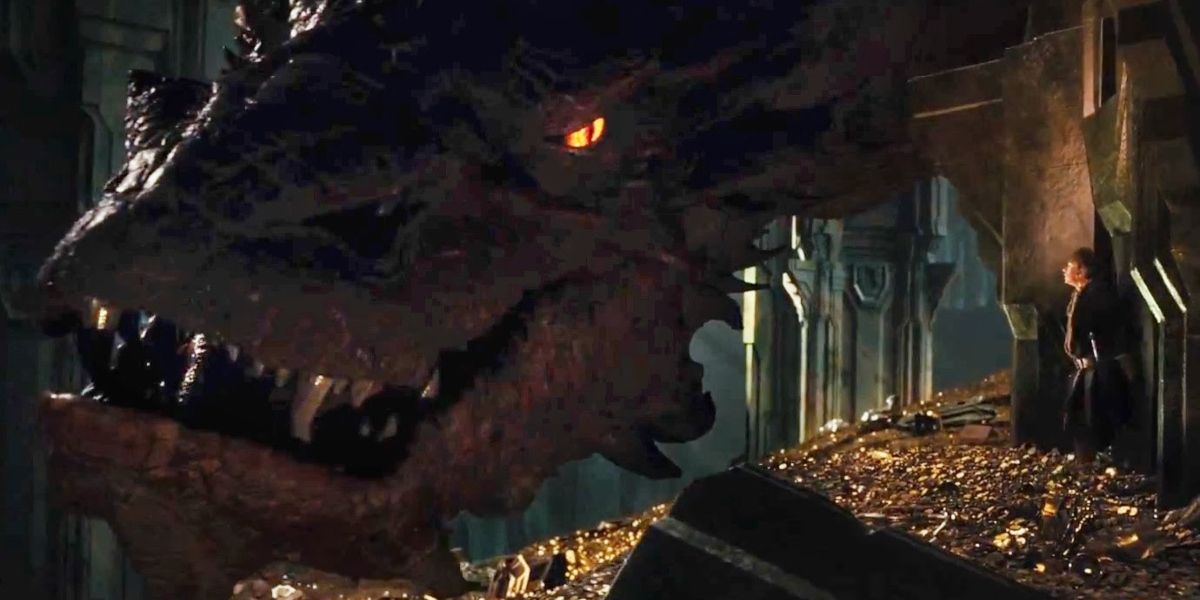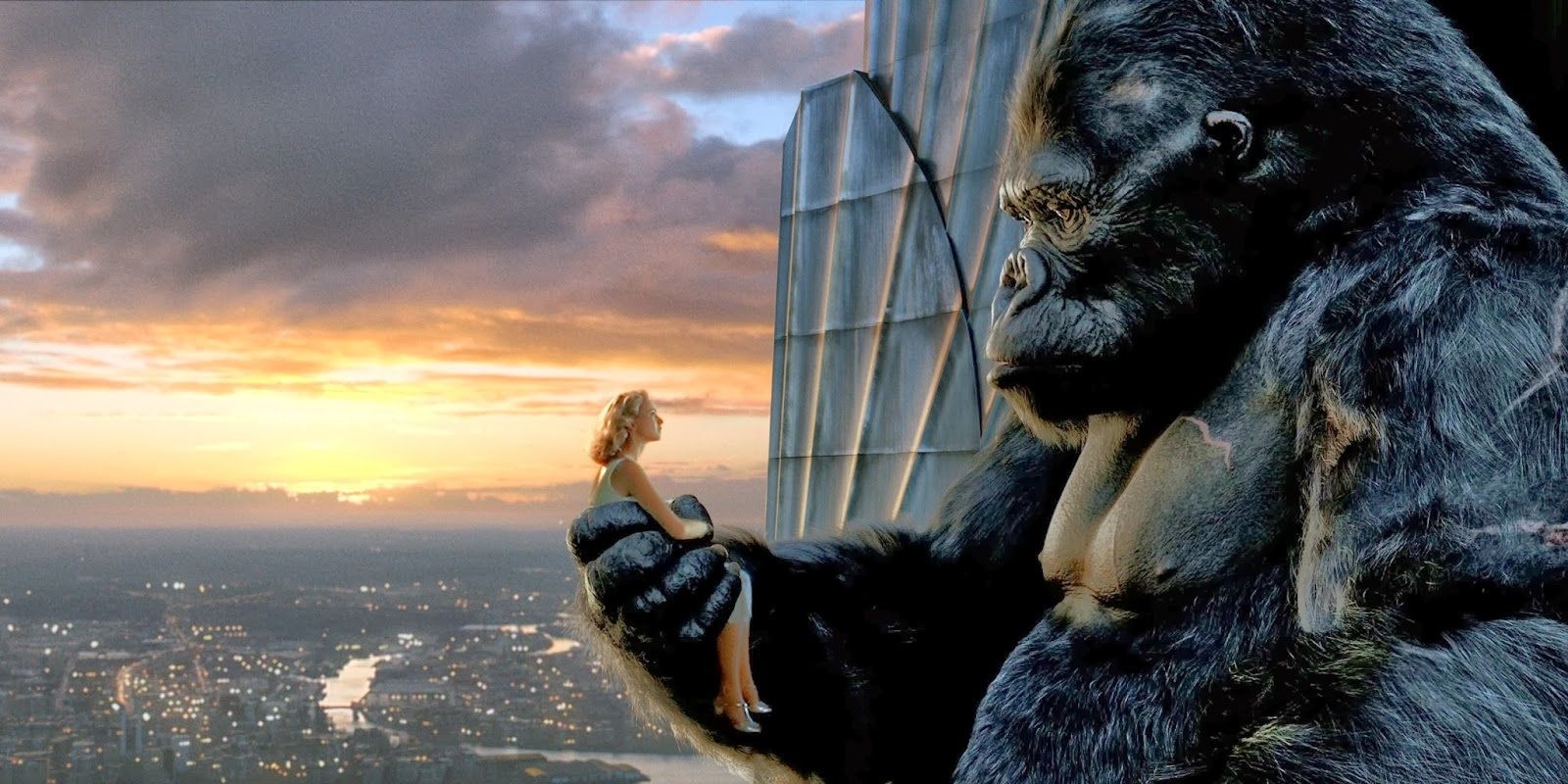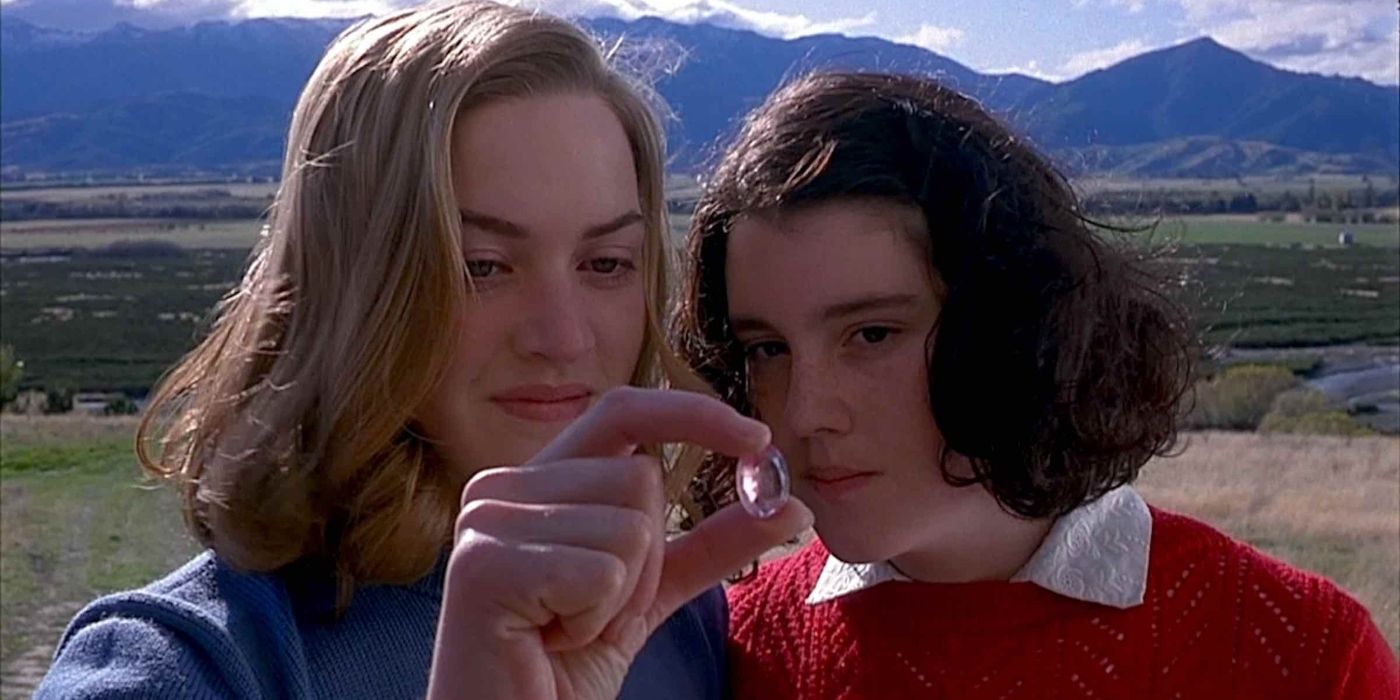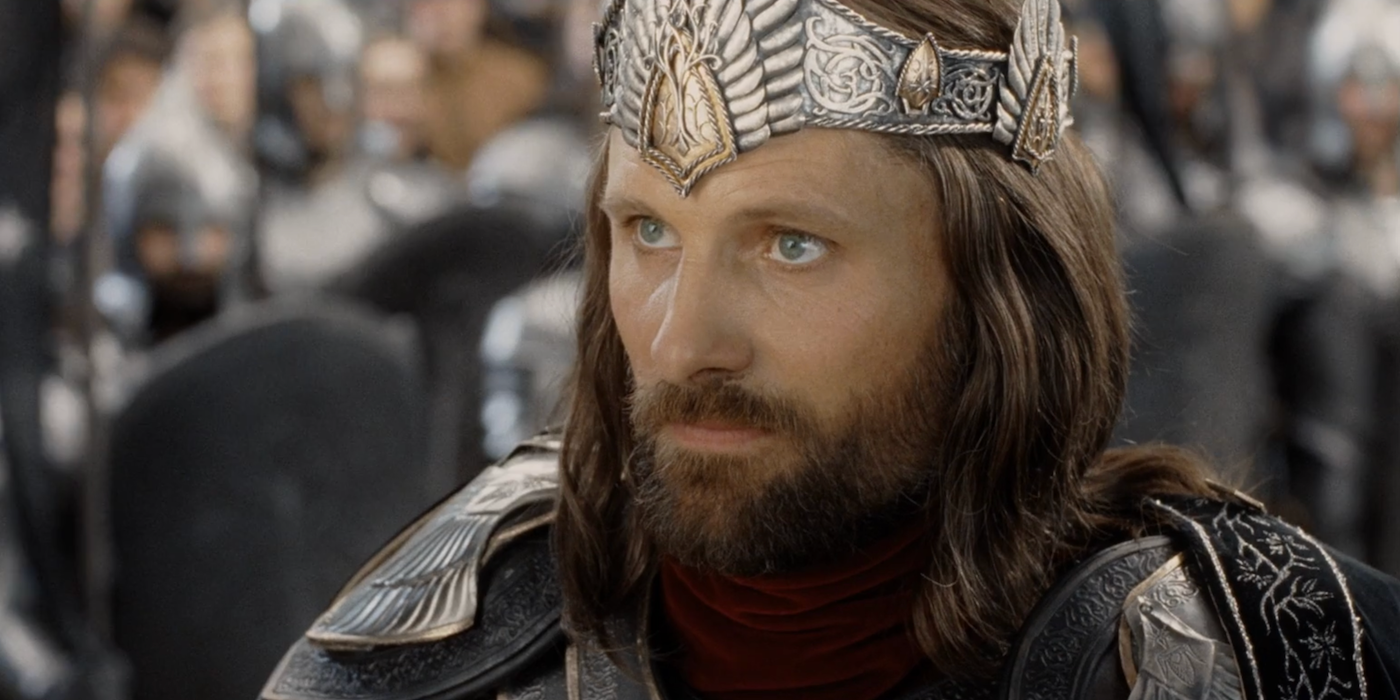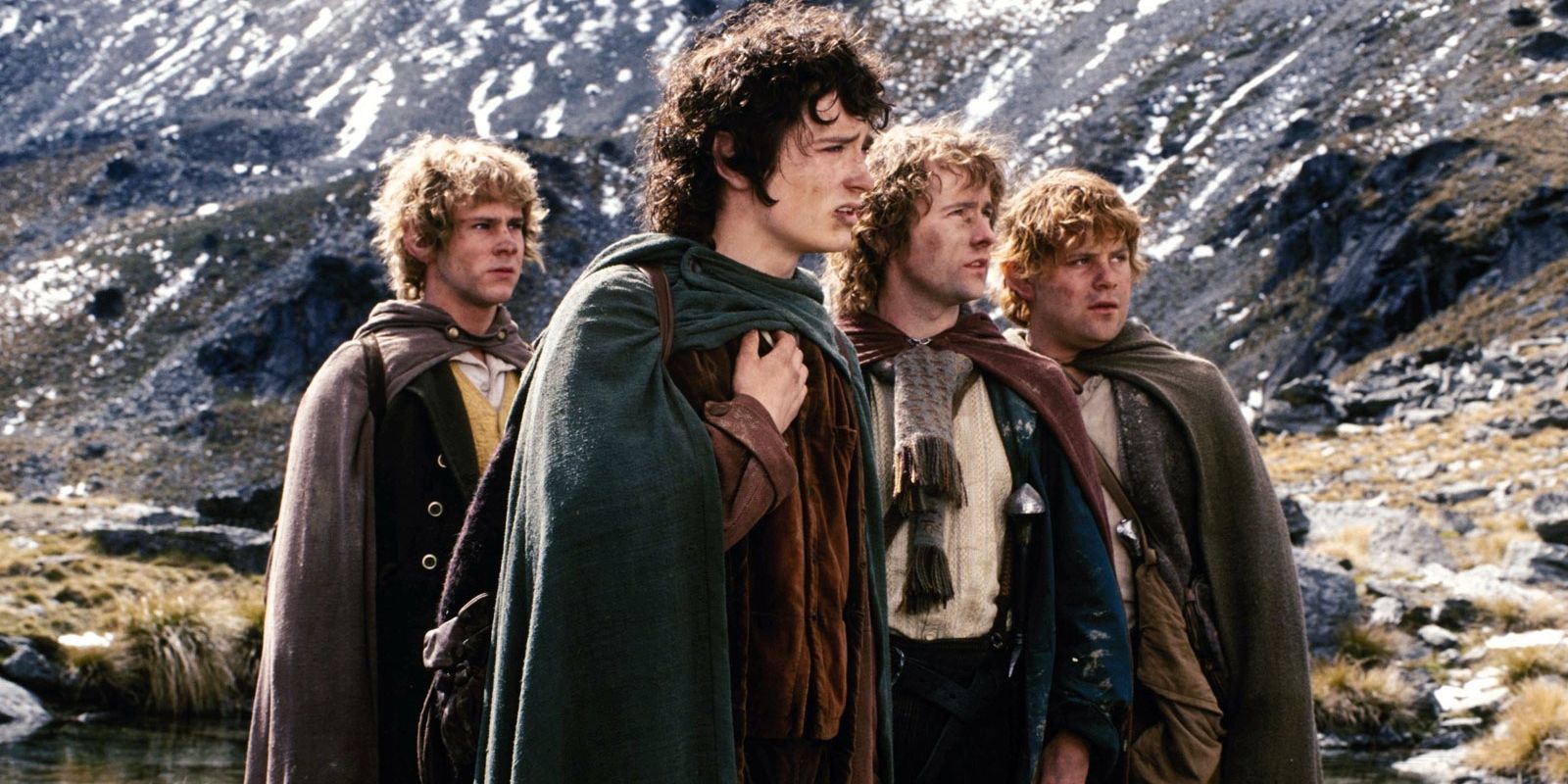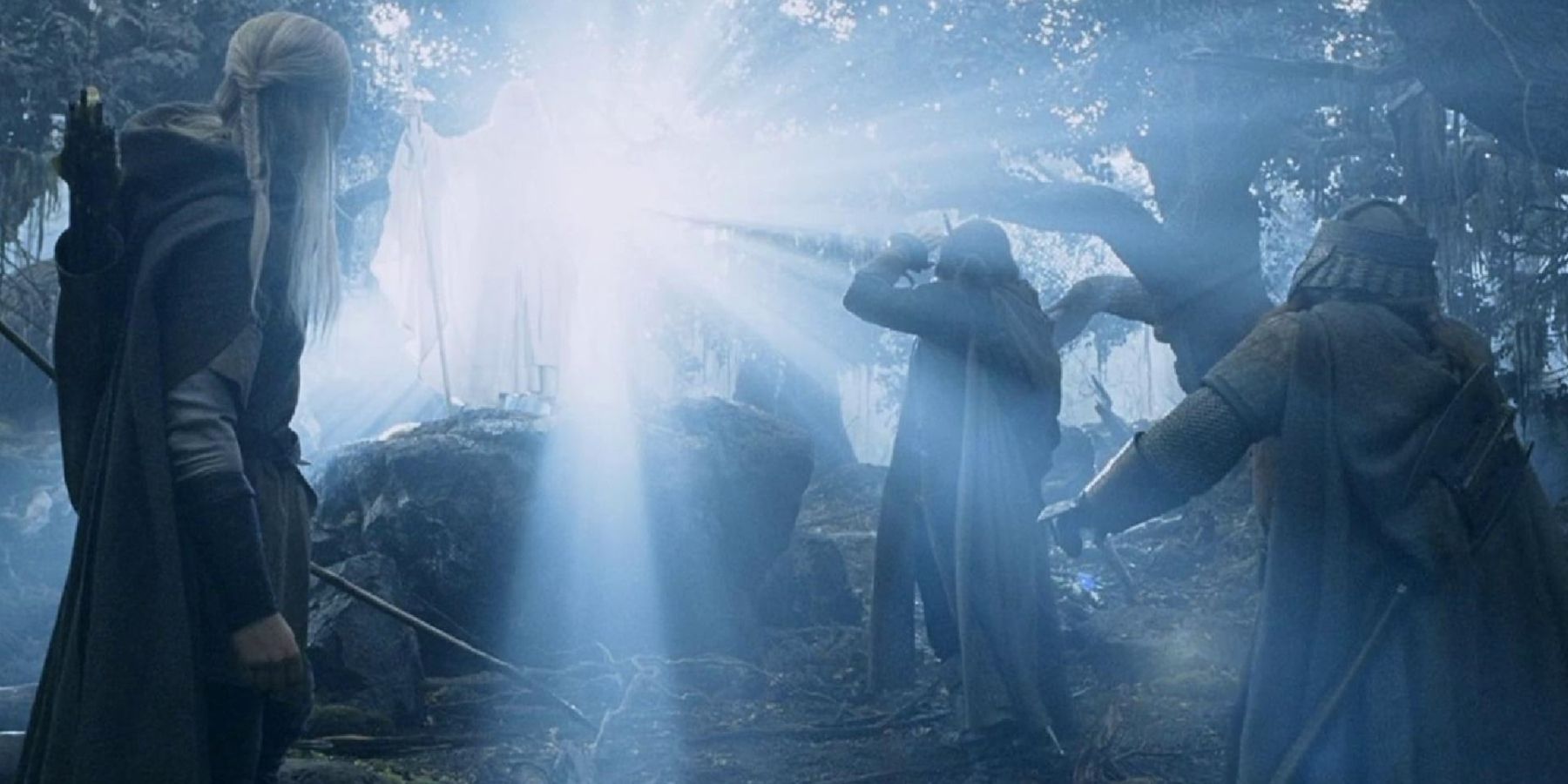Peter Jackson's path through filmmaking is wilder than any river that runs through Middle-earth. The filmmaker first burst on to the scene surrounded by buckets and buckets of blood, crafting splatter horror-comedies on shoe-string budgets. Exploding heads, depraved puppets, flesh-eating aliens; Jackson cut his teeth on the aggressively gory and gruesome, before casually pivoting into billion-dollar blockbusters, redefining fantasy storytelling on the big screen, and setting a few records at the Academy Awards. Rewatching Jackson's filmography is an experience—the peaks! those valleys!—but we did it, and then we ranked them all. (Except for the 1995 mockumentary Forgotten Silver because I feel weird ranking a co-directed credit, but I would like to note the story of how mad people got at that movie is very, very funny.)
Here is every Peter Jackson movie, ranked from worst to best.
14. Meet the Feebles
The first thing I would do with a time machine is travel back to a 1989 screening of Meet the Feebles and tell a few people that the man behind this depraved sex-crazed puppet acid trip would become the third-highest grossing director of all time with more than 30 Oscar nominations attached to his films. Billed as a spluppet—that's splatter + puppet—creature feature, Feebles offers a look behind a Jim Henson-esque puppet variety show, except these particular feltballs spend their time banging, snorting, murdering, raping, and having violent extended flashbacks to the Vietnam War. This film ends on a jaunty ode to sodomy getting interrupted by a mass shooting carried out by a character named Heidi the Hippo. Meet the Feebles is...a lot, setting the bar for bad taste all the way at the bottom and designed to be shown at midnight screenings where the over-the-top offensiveness is part of the fun. But just as a movie, it's mostly exhausting by the end. But there is impressive artistry in the puppetry—even when that puppetry is nauseating!—and you can't ignore this movie's inspiration on more modern comedies like Team America: World Police and The Happytime Murders.
13. Bad Taste
Full disclosure, I think Bad Taste kind've rules, but Jackson's feature debut is clearly a DIY launching pad to greater things. Filmed mostly on weekends over the course of four years and cast with Jackson's friends around Pukerua Bay, New Zealand, Bad Taste follows the battle between the Astro Investigation and Defence Service—that's AIDS, in case you weren't sure Jackson was young as hell when he made this movie—and an invading alien force come to Earth to harvest human flesh for their fast-food chain. There's a real gleeful, running-around-the-backyard-with-your-friends vibe to Bad Taste that's incredibly endearing, but there's also signs of the obvious technical prowess Jackson possessed even then. The many, many gushing, oozing gore effects are genuinely impressive, including an open-skull wound on the back of Jackson's own head that still holds up in stomach-churning detail to this day. Eventually, the New Zealand Film Commission took notice of the impressive footage Jackson had compiled and threw in $235,000 to help finish the film, which is the exact moment the movie starts blowing shit up. You love to see it.
12. The Lovely Bones
Jackson just never gets a handle on The Lovely Bones. An adaptation of Alice Sebold best-selling novel, the film tells the story of high-schooler Susie Salmon (Saoirse Ronan), brutally murdered by her neighbor George Harvey (Stanley Tucci) and stuck in a dazzling limbo watching her family struggle to move on. The Lovely Bones is occasionally stunning visually, as Jackson had leaned in hard at this point to the full power of Weta Digital, crafting a candy-colored afterlife with the same focus on awe as Lord of the Rings. But together with co-writers Fran Walsh and Philippa Boyens, Jackson ping-pongs the story between wild tonal shifts, moments of gruesome terror pulled from his horror background straight into lighthearted house-cleaning montages and then into over-saccharine Sunday school drama. Throught all of it, there's no actual sense of a journey for Susie, and without any of that inner exploration afforded by a novel, the film's conclusion comes way too close to "this young girl's murder was totally worth it." Ronan and Tucci are both remarkable, though, the least surprising thing about any movie they've ever appeared in.
11. The Hobbit: Battle of the Five Armies
It was always going to be an effort to turn J.R.R. Tolkien's slim Lord of the Rings prequel into three epics on par with the first trilogy and The Hobbit: Battle of the Five Armies is that stretch personified, a two-and-a-half-hour adaptation of a paragraph. The spectacle is there, but that isn't surprising; Jackson had spent most of the last decade proving he could stage a high fantasy battle with the best of them. But there is zero weight to the showdown at the Lonely Mountain between one elf army + one dwarf army + one human army + two orc armies. It's a mind-numbing stretch of ones crashing into zeroes, all mushed together under the same grey-ish color palette, fun for a short while before growing repetitive. Which, hey, is mostly fine—it's elves and dwarves fighting monsters, a satisfying tale as old as time—but Battle of the Five Armies barely makes time for its emotional centers. The sudden heel turn and equally jarring redemption of Thorin Oakenshield (Richard Armitage) is chalked up to "dragon sickness", which ranks only behind "space madness" in film history's most convenient brain fogs.
Negative 100 points for the bit at the end where Thranduil (Lee Pace) tells Legolas (Orlando Bloom) to go find an "infamous" ranger named Strider. No, 1,000 points. How dare you remind me Viggo Mortensen is supposed to be 87 damn years old in Fellowship of the Ring.
10. The Hobbit: An Unexpected Journey
The Hobbit: An Unexpected Journey has a furry foot up on Battle of the Five Armies for a few reasons. Firstly, and this is just pure nostalgia over any technical criticism, it was just really nice to be back in Middle Earth in 2012; to hear Howard Shore's floating themes again, to see the craftsmanship on every inch of the costume design, to just sort of bask in that attention to detail Jackson brought to those Shire hidey-holes and golden elven halls. Secondly, An Unexpected Journey is really the only Hobbit movie that keeps Bilbo Baggins front and center; a shame, because Martin Freeman is incredibly charming in the role, utilizing small quirks to make the character more than just a Frodo clone. But yeah, nostalgia only gets you so far. There is still the case of that 48 frames per second frame rate, a classic "just because you can, doesn't mean you should" scenario that rendered the movie distractingly, almost surreally clear. It's also just a clear transition into a reliance on CGI; the main antagonist, Azog the Defiler, being a completely mo-cap performance robs him of all menace.
On Radagast the Brown: As much as I love Sylvester McCoy, I just don't think I'll ever get over how hard these movies need you to understand that Radagast is covered in shit.
9. Braindead (Dead Alive)
Braindead is the crown jewel of Jackson's pre-Hollywood splatter phase. It's almost like Jackson knew it would be his gory swan song, too, because this movie splatters like no other movie has ever splattered. Released as Dead Alive in North America, Braindead uses the slightest of zombie movie premises—a Sumatran Rat Monkey bites a woman at the zoo, spreading a horrific disease—to let Jackson and practical effects wizards Bob McCarron and Richard Taylor to go absolutely bugfuck insane for about 90 minutes. Skin is ripped, every limb imaginable is severed, brains are mushed, and there is just...so much oozing. And so, so much blood; some reports have as much as 79 gallons of fake people-juice flying around during the climactic battle between lawnmower and zombie army. And, you know, in many ways that all makes Braindead as much of a more-tech-demo-than-movie as Battle of the Five Armies. But there's just an energy to the onslaught of handcrafted gags in Braindead that nothing on a computer could touch. There's also a shockingly sweet little love story at Braindead's center between starry-eyed shopkeeper Paquita María Sánchez (Diana Peñalver) and the neurotic Lionel Cosgrove (Timothy Balme), whose courtship sees an obstacle in Lionel's overbearing mother (Elizabeth Moody), even after she turns into a 10-foot-tall abomination.
8. The Frighteners
The Frighteners might be the most obvious example, ever, of a director stuck firmly between his shock indie horror roots and big-budget blockbuster future. It's an incredibly charming supernatural romp starring Michael J. Fox as a psychic who uses his ghost pals to doop unaware clients into paying for an exorcism, featuring endearingly mid-90s VFX that wouldn't be out of place on the Haunted Mansion ride. At the same time, it's also...super R-rated, with a few gnarly deaths and some not-so-endearingly mid-90s quips that feel like outtakes from Meet the Feebles. ("I like it when they lie still like that" is a particularly memorable example.) The resulting roller-coast ride of tones is still fun, but messy, and I'd still love to see modern-day Peter Jackson flex his horror-comedy muscles with a budget like this one more time.
7. They Shall Not Grow Old
Peter Jackson has made a lot of movies with ghosts and ghouls, but They Shall Not Grow Old is the only one that's actually haunted. The filmmaker's only feature documentary, They Shall Not Grow Old is assembled from hours and hours of mostly-unseen WWI footage pulled from the Imperial War Museum's archives, cut with audio from BBC interviews with British servicemen who saw combat. Jackson and the team at Weta digital colorized and restored the footage, adding a spare sound effect and line of dialogue to the mix to recreate the atmosphere of the trenches as accurately as possible. The result is both uncomfortably immersive and painfully intimate, offering blockbuster-quality depictions of trauma, pain, and death that you know are real. Without a narrative, location marker, or subject identifier in sight, it also occasionally takes on a nightmare quality; you get lost in this footage that seems impossible. They Shall Not Grow Old is not what I'd call Jackson's most rewatchable film, but rewatches aren't really necessary. The experience sticks with you.
6. The Hobbit - The Desolation of Smaug
The Hobbit is possibly the only trilogy where the middle chapter had the easiest job. Where An Unexpected Journey had to convince audiences this return trip to Middle Earth was worth it and Battle of the Five Armies had to turn a brief passage into an action epic, The Desolation of Smaug just has to get from Point A to Point B and, at some point, make sure there's a big-ass dragon that looks good in IMAX. Jackson succeeded and then some, offering up the best Hobbit movie by a mile, and not even for some grand reason. It's just the most fun chapter, the one that feels most like a classic fantasy adventure, the one that actually feels the most like a slightly more lighthearted Lord of The Rings story, which is what The Hobbit has always been. This movie is breathless, and Jackson is clearly having a blast putting these set-pieces together; I still, to this day, don't know if this is a hot take, but the scene that sees the dwarf company escaping in barrels down a winding river whips complete ass. It's dumb, yes, and I still can't believe those GoPro shots made it in to the movie, but the dumbness is firmly on the endearing side.
Which isn't to say Desolation of Smaug is all fluff. This middle movie is the best showing for Richard Armitage as Thorin Oakenshield, and the performance is all incredibly quiet. By the time the company reaches Erebor, you can see panicked gears slowly turning behind Armitage's eyes; questions forming about what it would mean to come all that way for nothing. Seeing the anxiety over losing a legacy play out across Armitage's face—and then boiling over into pure desperation—is a lot more compelling than "dragon sickness."
6B. Benedict Cumberbatch Doing Mo-Cap for Smaug
I'm sorry, it is just very good.
5. King Kong
Peter Jackson really freaking loves King Kong. King Kong inspired a 9-year-old Peter Jackson to become a filmmaker. King Kong was the project Peter Jackson was trying to get made before, during, and after the entirety of Lord of the Rings. My guy owns one of the only surviving armatures of the original King Kong model. When Jackson finally, finally got to shoot his remake, all that love is, let's say, very apparent. Jackson's Kong is indulgent as all hell, a three-hour-plus love letter that lingers on every single beat. I hadn't seen this movie since it hit theaters and only really remembered A) Andy Serkis gets his face slurped off by a giant slug, and B) I mostly hated it. My 2021 rewatch revealed something kind've surprising: Peter Jackson's King Kong is something close to a monster masterpiece.
That really comes down to how much tragedy he injects into all that dinosaur-stompin' spectactle. Serkis' motion-capture performance as the big guy is impressively animal-accurate, but layered with such effective flashes of humanity. It's a Kong you empathize with, and Jackson paints him as a lonely god, massive compared to Anne Darrow (Naomi Watts) but small in his island isolation, the last of his kind watching golden Skull Island sunsets by himself. The more you just give in to this movie's mammoth runtime, the more the moments of small beauty stick out. It's in Jack Black's surprisingly complex performance as director Carl Denham, who knows what he's doing is immoral but physically can't stop himself. It's in Anne's laughing at Kong, the sound echoing in a supernaturally quiet Central Park. It's the way Jackson frames Kong against New York City as he's riddled with bullets, emphasizing the fact this misunderstood monster was forced into a place he didn't belong.
4. Heavenly Creatures
Heavenly Creatures isn't technically a horror movie—and it's arguably the most bloodless thing Jackson has ever made—but it's also his scariest film. Based on the real-life case of Pauline Parker and Juliet Hulme, two New Zealand teens who bludgeoned Parker's mother to death in 1954, Heavenly Creatures earned a Best Original Screenplay nomination with a story about the divide between friendship and obsession. Kate Winslet and Melanie Lynskey, both making their feature film debuts, are remarkable as Hulme and Parker. There's not a "crazy" note in either performance; these could be any two girls you know, finding a fierce friendship at a formative age. Jackson gives their bond a fairytale quality, both metaphorically and literally. The filmmaker utilizes his VFX and model work to build a fantasy world to which Hulme and Parker escape. Heavenly Creatures almost feels like a more successful Lovely Bones, because the dazzling visuals serve a purpose, emphasizing the way a spiral away from reality can feel like something joyful. It's also just Jackson's most subtle film, all small touches and sunlight, so the absolutely brutal ending knocks the wind out of you. The most chilling touch? Lynskey's narration is pulled verbatim from Parker's diaries, the ones that implicated her immediately in the crime, the ones in which she wrote in perfectly calm hand: "The next time I write in this diary, mother will be dead. How odd, and yet how pleasing.”
3. The Lord of the Rings: The Return of the King
As Theoden once whispered to Aragorn: "What would you have me do?" The Lord of the Rings trilogy is Jackson's crowning achievement and any other Top 3 would be some Sauron-ass levels of treachery and deceit. With that said, Lord of the Rings: Return of the King is a masterpiece, it's just slightly less of a masterpiece than the two movies that came before it. And no, it's not because of the multiple endings. I like the multiple endings; I like that Jackson took his sweet time letting go of his magnum opus, lingering on every tear to leave Sean Astin's eyes. This movie was incredibly informative for a generation who needed to understand it's cool to openly weep over your sheer unironic love for your best bud. I love that. I love that Jackson could've left the franchise on the sight of a newly-crowned king, but opted to fade to black over a humble Hobbit hole. Big things, small packages, etc etc.
Return of the King falls just slightly down the ranking because it features the smallest amount of real, human moments. That's really it. The battles are big, badass spectacles that influenced both action and fantasy in ways we're still seeing. The performances are still top-to-bottom breathtaking. That one orc with the messed up face who casually steps out of the way of the big boulder is still a personal role model of mine. But the miracle of this trilogy is that it's a trio of three-hour fantasy movies that felt relatable; that still feel relatable to new generations that are discovering them. Return of the King, with hits big, bold finale bombast, just feels slightly out of reach.
"My friends, you bow to no one" still knocks me on my ass, though. Every time.
2. The Lord of the Rings: The Fellowship of the Ring
It's almost impossible to look back and appreciate the impact of The Lord of the Rings: The Fellowship of the Ring from a place where nerdiness is synonymous with blockbusters. Peter Jackson dropped a three-hour adaptation of the densest popular fantasy ever published, leaned into the lore, kept its earnestness, and it turned into a phenomenon. You could list the reasons until the sun burns out, but the fact of the matter is Fellowship of the Ring is just a beautiful, moving piece of art. From those soaring helicopter shots over Jackson's native New Zealand, to Elijah Wood's quietly courageous lead performance as Frodo Baggins, to a Howard Shore score that'd still transport you to another place in under 3 notes. Epic and intimate at the same time, Fellowship of the Ring has a higher emotional-beats-to-jaw-dropping-action ratio than most full franchises. If Boromir's (Sean Bean) last-breath words to Aragorn (Viggo Mortensen) don't still bring tears to your eyes, I truly don't know what to tell you.
1. The Lord of the Rings: The Two Towers
Why is Peter Jackson so good at the middle chapters of epic trilogies? Impossible to say. All I know is that The Lord of the Rings: The Two Towers is where Fellowship's warmth and Return's ambition meet to form a flawless, timeless fantasy. It's one of the only films that straight-up turns me into Bill Hader's Stefon, a three-hour ride that really does have everything. The quiet of Merry (Dominic Monaghan) and Pippin (Billy Boyd), two of Middle-earth's smallest creatures, teaching the gigantic Ents the meaning of urgency. The swift violent action of the Warg rider raid. The absolutely astonishing sexual energy of Aragorn opening those doors in Helm's Deep. And, at its center, the battle for Helm's Deep itself, a combination of every positive aspect of Peter Jackson's filmography in one place. The use of tension and distant sound in the lead-up is terrifying. The violence is gruesome, the scale of the entire thing massive, but the miniatures used to create it all so lovingly crafted the effect is seamless. The moment Gandalf (Ian McKellen) arrives with the dawn and the Rohirrim at his back, the score swelling and the Uruk-hai army freaking the hell out at the splendor of it all, is one of those moments you can point to and say, "see, that's why we do movies." It's Peter Jackon's best. It's one of the best of all time, period.

